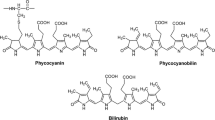Abstract
Diabetes mellitus (DM) is a metabolic disorder characterized by high blood glucose level (hyperglycemia). Type 2 diabetes mellitus is mainly featured by low cell sensitivity towards insulin stimulation, caused by ectopic fat storage. Insulin resistance can be quantified from high number of HOMA-IR index and observed from glucose transporter 4 (GLUT-4) translocation on membrane of skeletal muscle cells. Combined treatment of electric field, magnetic field, and infrared ray have potential to reduce insulin resistance due to improving blood circulation and increasing intracellular Ca2+ level. The aim of study was to determine the effect of electric field, magnetic field, and infrared ray combination to lower insulin resistance in the type II diabetic model of Mus musculus. This study used 30 adult male mice strain BALB/c. Diabetes was induced using high-fat diet/streptozotocin method until random blood glucose level reached > 200 mg/dL. Diabetic mice were then exposed to electrical field (static and dynamic), magnetic field (static and induce), and infrared ray (with or without infrared ray) combination therapy 15 min daily for 28 days. Fasting blood glucose level, plasma insulin level, HOMA-IR index, and membrane GLUT-4 density after treatment were analyzed statistically at α = 0.05. Result showed that exposure combination of electrical field, magnetic field, and infrared were found to be able to lower fasting blood glucose level and HOMA-IR index significantly, but plasma insulin level and GLUT-4 density were not found to be significantly different compared to diabetic control. Based on current study result, the best combination for reducing insulin resistance in diabetic mice is BsEsI (combination of static magnetic field (Bs), static electric field (Es), with infrared (I)), indicated by lowest HOMA-IR compared to other groups. Exposure to combination of magnetic field, electrical field, and infrared resulted in lowering fasting blood glucose level and HOMA-IR index in diabetic mice, indicating reduced insulin resistance.



Similar content being viewed by others
References
Zaccardi O, Webb DR, Yates T, Davies MJ (2016) Pathophysiology of type 1 and type 2 diabetes mellitus: a 90-year perspective. Post Grad Med J 92(1084): 63–69
American Diabetes Association (2010) Diagnosis and classification of diabetes mellitus. Diabetes Care 33(Supplement 1):S62–S69
Czech MP (2017) Insulin action and resistance in obesity and type 2 diabetes. Nat Med 23(7):804–814
Irace C, Carailo C, Scavelli F, de Franceschi MS, Esposito M, Gnasso A (2014) Blood viscosity in subjects with normoglycemia and prediabetes. Diabetes Care 37:488–492
Suhariningsih WD, Husen SA, Priyo TA (2018) Finding the optimized frequency of electric field on the attempt of reducing blood sugar level in type II diabetes patients. J Vocat Program Univ Indones 6(1):598–608
Abhari FR, Andarieh MG, Farokhfar A, Ahmady S (2014) Estimating rate of insulin resistance in patients with preeclampsia using HOMA-IR index and comparison with non-preeclampsia pregnant women. BioMed Research International 140851:1–6
Wilcox G (2005) Insulin and insulin resistance. Clin Biochem Rev 26(2):19–39
Jiang F, Li CG, Rand MJ (1997) Mechanisms of electrical field stimulation-induced vasodilatation in the guinea-pig basilar artery: the role of endothelium. J Auton Pharmacol 17:71–76
Silva G, Ferraresi C, de Almeida RT, Motta ML, Paixão T, Ottone VO, Fonseca IA, Oliveira MX, Rocha-Vieira E, Dias-Peixoto MF, Esteves EA, Coimbra CC, Amorim FT, de Castro MF (2018) Infrared photobiomodulation (PBM) therapy improves glucose metabolism and intracellular insulin pathway in adipose tissue of high-fat fed mice. Lasers Med Sci 33(3):559–571
Song EK, Lee YR, Kim YR (2012) NAADP mediates insulin-stimulated glucose uptake and insulin sensitization by PPARg in adipocytes. Cell Rep 2:1607–1619
Sinatra FL (2010) Understanding the interaction between blood flow and an applied magnetic field. PhD Thesis, University of South Florida
Gmitrov J (2013) Static magnetic field effect on microcirculation, direct versus baroreflex-mediated approach. Electromagn Biol Med 32(4):448–462
Tao R, Huang K (2011) Reducing blood viscosity with magnetic fields. Phys Rev E Stat Nonlin Soft Matter Phys. 84(1 Pt 1):011905
Maegawa Y, Itoh T, Hosokawa T, Yaegashi K, Nishi M (2000) Effects of near-infrared low-level laser irradiation on microcirculation. Lasers Surg Med 27:427–437
Kokura S, Adachi S, Manabe E, Mizushima K, Hattori T, Okuda T, Nakabe N, Handa O, Takagi T, Naito Y, Yoshida N, Yoshikawa T (2007) Whole body hyperthermia improves obesity-induced insulin resistance in diabetic mice. Int J Hyperth 23(3):259–265
Arifin WA, Zahiruddin WM (2017) Sample size calculation in animal studies using resource equation approach. Malays J Med Sci 24(5):101–105
Skovso S (2014) Modeling type 2 diabetes in rats using high fat diet and streptozotocin. J Diabetes Investig 5:349–358
Astuti SD, Prasaja BI, Prijo TA (2017) An in vivo photodynamic therapy with diode laser to cell activation of kidney dysfunction. J Phys Conf Ser 85(2017):12038
Holick MF (2016) biological effects of sunlight, ultraviolet radiation, visible light, infrared radiation and vitamin D for health. Anticancer Res 36:1345–1356
Mycielska ME, Djamgoz MBA (2004) Cellular mechanism of direct-current electric field effects: galvanotaxis and metastatic disease. J Cell Sci 117:1631–1639
Morigny P, Houssier M, Mouisel E, Langin D (2016) Adipocyte lipolysis and insulin resistance. Biochimie 125:259–266
Contreras-Ferrat AE, Toro B, Bravo R (2010) An inositol 1,4,5-triphosphate (IP3)- IP3 receptor pathway is required for insulin-stimulated glucose transporter 4 translocation and glucose uptake in cardiomyocytes. Endocrinology 151:4665–4677
Park DR, Park KH, Kim BJ, Yon CS, Kim UH (2015) Exercise ameliorates insulin resistance via Ca2+ signals distinct from those of insulin for GLUT4 translocation in skeletal muscles. Diabetes 64:1224–1234
Afzalpour ME, Yousefi MR, Eivari SHA, Ilbeigi S (2016) Changes in blood insulin resistance, GLUT4 and AMPK after continuous and interval aerobic training in normal and diabetic rats. J Appl Pharm Sci 6(9):076–081
Belfiore A, Malaguarnera R, Vella V, Lawrence MC, Sciacca L, Frasca F, Morrione A, Vigneri R (2017) Insulin receptor isoforms in physiology and disease: an updated view. Endocri Soc 38(5):379–431
Tohidi M, Ghasemi A, Hadaegh F, Derakhshan A, Chary A, Azizi F (2014) Age- and sex-specific reference values for fasting serum insulin levels and insulin resistance/sensitivity indices in healthy Iranian adults: Tehran Lipid and Glucose Study. Clin Biochem 47(6):432–438
Laszlo JF, Szilvasi J, Fenyi A, Szalai A, Gyires K, Porszasz R (2011) Daily exposure to inhomogeneous static magnetic field significantly reduces blood glucose level in diabetic mice. Int J Radiat Biol 87(1):36–45
Zhao J, Li YG, Deng KQ, Yun P, Gong T (2017) Therapeutic effects of static magnetic field on wound healing in diabetic rats. J Diabetes Res 2017:6305370 5 pages
Keszler A, Lindemer B, Weihrauch D, Jones D, Hogg N, Lohr NL (2017) Red/near infrared light stimulates release of an endothelium dependent vasodilator and rescues vascular dysfunction in a diabetes model. Free Radic Biol Med 131:157–164
Funding
The author would like to say thank to Universitas Airlangga for the grant support under Grant Number [No. 1408/UN3/2019].
Author information
Authors and Affiliations
Corresponding author
Ethics declarations
This study was approved by the Ethical Committee of the Faculty of Veterinary, Universitas Airlangga with the reference number 2.KE.055.01.2018.
Conflict of interest
The authors declare that they have no conflict of interest.
Additional information
Publisher’s note
Springer Nature remains neutral with regard to jurisdictional claims in published maps and institutional affiliations.
Rights and permissions
About this article
Cite this article
Suhariningsih, Winarni, D., Husen, S.A. et al. The effect of electric field, magnetic field, and infrared ray combination to reduce HOMA-IR index and GLUT 4 in diabetic model of Mus musculus. Lasers Med Sci 35, 1315–1321 (2020). https://doi.org/10.1007/s10103-019-02916-z
Received:
Accepted:
Published:
Issue Date:
DOI: https://doi.org/10.1007/s10103-019-02916-z




